

Bright emerald plumage blends seamlessly with a darker green and black tail, all capped off by a black hood, making the Green Honeycreeper a beautiful bird to behold.
The upper wings and tail both tend to be darker than the rest of the bird, with blackish edges to the flight feathers and tail feathers.
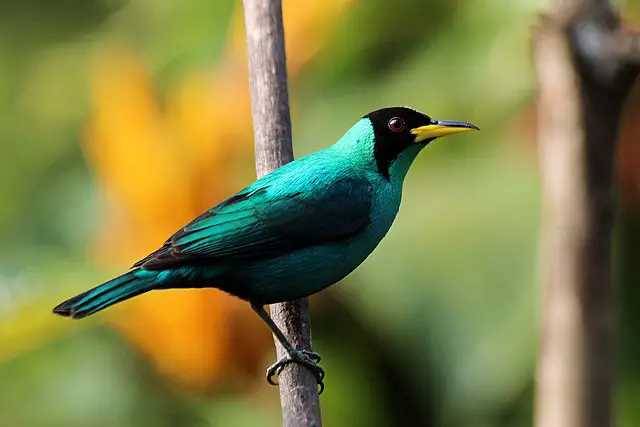
Photo Courtesy of Charles James Sharp – CC BY-SA 4.0The underside of both wings and tail are blackish too. As mentioned the head of the Green Honeycreeper is capped off with a black hood and crown, while both sides of the chin and throat are bright blue-green.
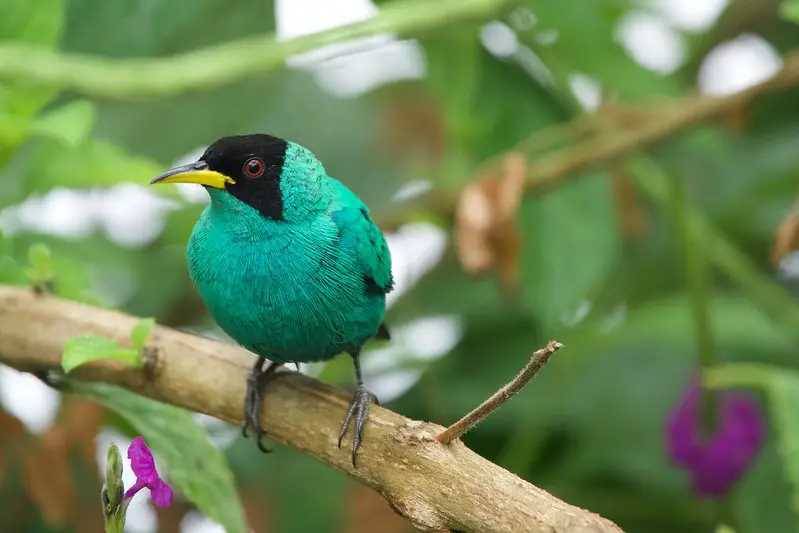
Photo Courtesy of Steve Peck – CC BY 2.0There is also a yellow-green tinge between the black and blue-green plumage on the nape and chin.
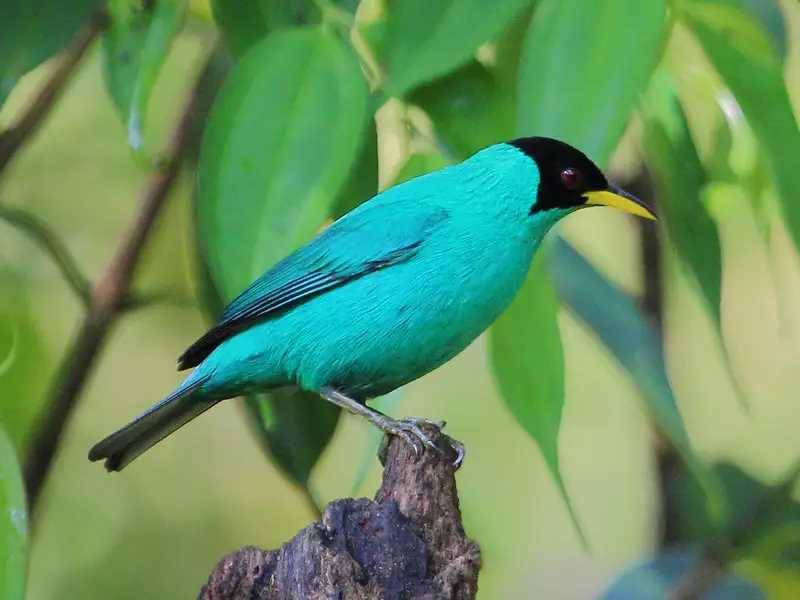
Photo Courtesy of ryanacandee – CC BY 2.0The bill is sharp, pointed, and very straight, colored a bright yellow. Legs and feet are both grey and the eyes are red.
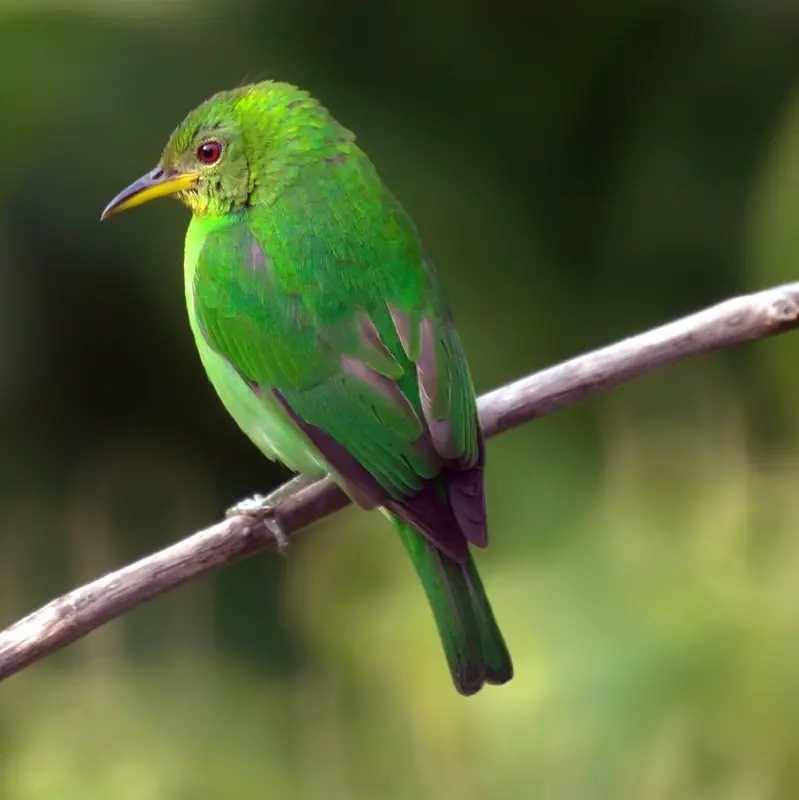
Females are quite different from their male counterparts, with more of a dull green plumage overall.
The flight feathers and tail feathers are a darker green. Her legs and feet are similar to the males, however, her eyes are a reddish-brown color. Juveniles of the species tend to look like the female, though with a dark grey bill, and brown eyes.
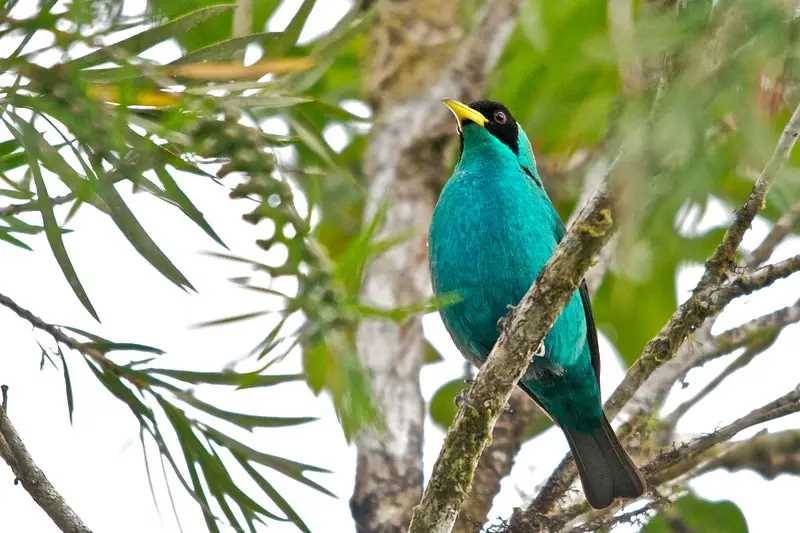
This species lives in wet forests and secondary woodlands, from southern Mexico through to the Amazon Basin, north-west Peru into Bolivia, southern Columbia, and Venezuela. They can also be found in eastern Brazil.
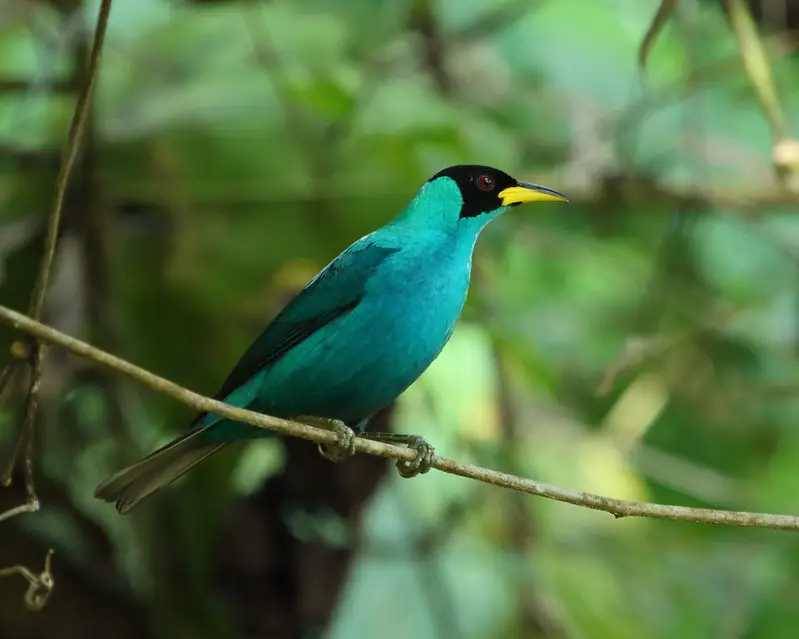
Their main diet consists of fruits, but they also drink nectar from flowers and eat any insects they are able to catch.
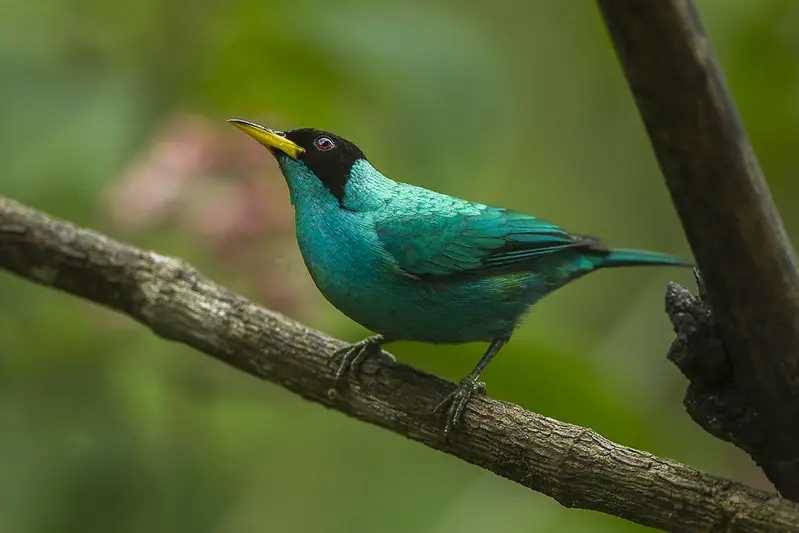
The breeding season for the Green Honeycreeper is around February through to August. The female will lay two eggs in a shallow cup she built around 3 to 12 meters above the ground. When hatched, the young completely depend on both parents until they are ready to leave the nest.
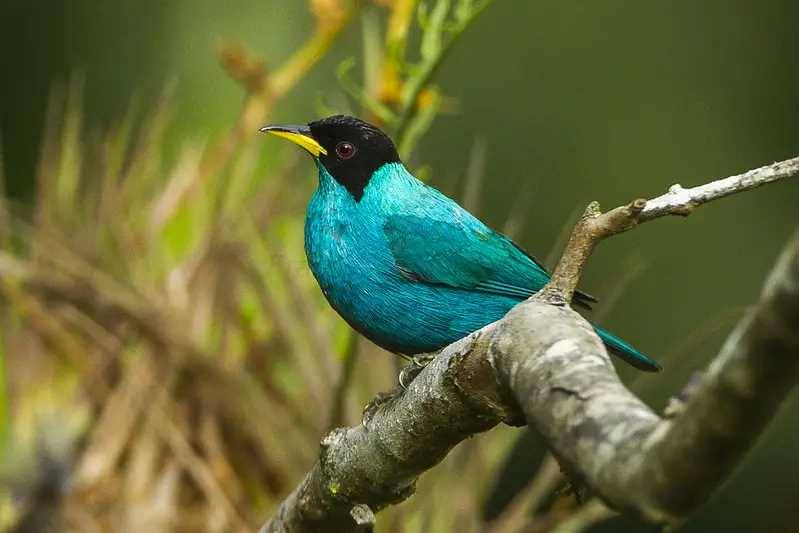
Thankfully this beautiful bird is not threatened with extinction.
